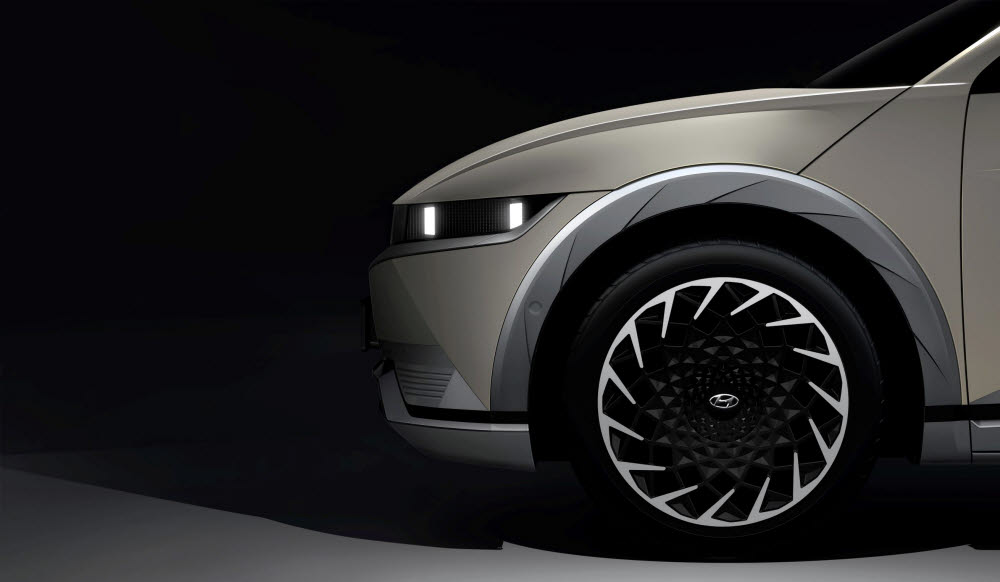The electric car’Ioniq 5’equipped with Hyundai Motor’s first dedicated platform will be released in Korea as a taxi version. Until now, electric taxis have a narrow back seat, which has resulted in poor marketability, but unlike previous modified electric cars, the’Ioniq 5’has secured a boarding space at the level of Tucson and Santa Fe, which are medium and large sports utility vehicles (SUVs).
Currently, electric cars that can be used as a taxi size are about Tesla’s’Model S’and’Model X’, but the price of these vehicles is more than 100 million won, which is twice as expensive as the’Ionic 5′. The IONIQ 5 taxi version is about 10% cheaper than general vehicles while subtracting some features, and additional government subsidies (2 million won) are also available.
Hyundai Motor Company is expected to create new demand for electric vehicles even in the taxi transportation sector that has not been easily accessible so far.

According to the industry on the 21st, Hyundai Motor Company will release the taxi version of’Ioniq 5’in June. Hyundai Motor Company will hold the world’s first Ioniq 5 public event at 4 pm on the 23rd and receive a pre-contract from 10 am on the 25th.
The taxi version starts shipping in June, two months later than other vehicle launches. After the launch of the long range two-wheel (2WD) in mid-April and the four-wheel (4WD) in mid-May, it was decided to release a taxi version along with the general model.
Ionic 5 is the first electric vehicle to apply the Hyundai Motor Group electric vehicle platform’E-GMP’. The wheelbase (distance between axes) that influences the interior space is 3000 mm, which is known to be longer than the Palisade (2900 mm).
Hyundai’s’Kona Electric’ and Kia’s’Niro Electric’, which have been used as taxis, were modified electric vehicles based on internal combustion engine vehicles. Due to the limitations of the platform, there were significant restrictions on securing the second row space.
On the other hand, Ioniq 5’s space utilization has improved significantly as parts of the internal combustion locomotive, including engines, have been eliminated. Due to the characteristics of the taxi, it is possible to secure more space by pulling the first row of passenger seats forward.
It is known that Hyundai Motor Company set a plan to set 26,500 domestic quantities of Ioniq 5 this year, and sell about 40% of them to corporations. The taxi market is one of its main targets.
The taxi version is expected to give consumers more opportunities to experience Ioniq 5.
The situation is positive, with support for the taxi industry’s rapid transition to electric vehicles. Private corporations, including taxi companies, plan to convert 100% eco-friendly vehicles by 2025 or 2030, and receive priority support for electric vehicle subsidies from the Ministry of Environment as well as budget for installing chargers.
As of the end of last year, the number of taxis registered in Korea was 251083. In general, the number of taxis in Seoul and Gyeonggi, where the supply of chargers is fast, reaches 109568.
The price of the Ionic 5 taxi version is expected to be around 50 million won. Prior to this, Tesla lowered the price of the domestic long range’Model 3’to 59.99 million won. Hyundai Motor Company is likely to sell the long range version of the’Ioniq 5’at a lower price.
The taxi version is expected to be cheaper because it excludes some advanced and convenient features. Ioniq 5 is equipped with cameras and displays on the left and right sides of the first row to understand the side situation, but it is expected to be excluded from the taxi version. This is because the camera price alone costs about 1.5 million won. In addition, it is expected to reduce unit cost by excluding additional functions such as vehicle-to-vehicle electricity supply (V2L).
Considering the price cut, several advanced driver assistance systems (ADAS) functions for semi-autonomous driving and some convenience functions are also expected to be excluded. In general, the taxi version of other automobiles does not have functions such as adaptive quiet driving (ACC) and lane maintenance assistance system (LKAS), electric seats, and ventilation seats as standard, but as an option.
Reporter Park Jin-hyeong [email protected], Reporter Park Tae-joon [email protected]
